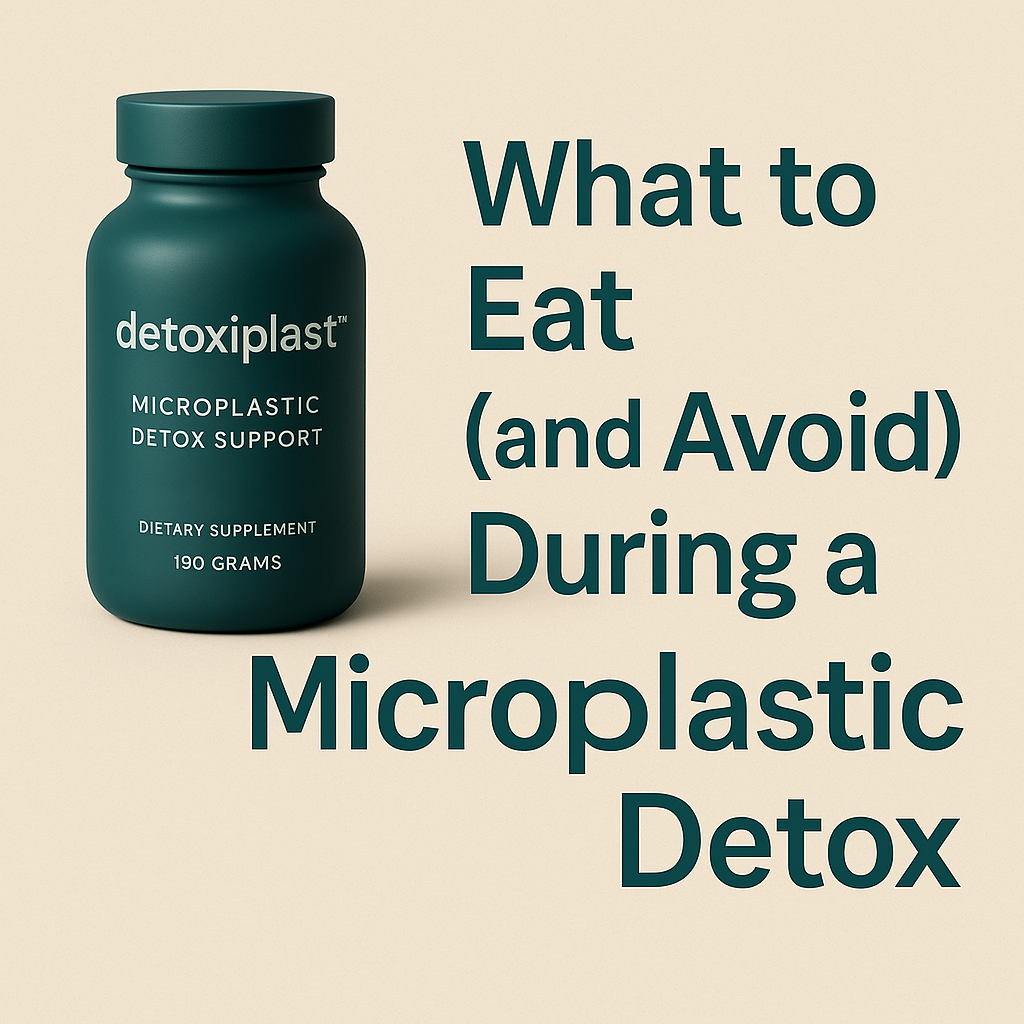
What to Eat (and Avoid) During a Microplastic Detox
Share
You’re flushing out decades of microplastic buildup — don’t sabotage your results with the wrong foods. A proper detox isn’t just about what you take — it’s about what you stop putting into your body.
Here’s what to eat and avoid during your microplastic cleanse.
🟢 Foods to Eat During a Detox
1. Hydrating Plants – Cucumber, celery, leafy greens, watermelon
These help flush the kidneys and support lymphatic movement.
2. High-Fiber Veggies – Artichokes, asparagus, Brussels sprouts
They sweep the digestive tract and prevent reabsorption of toxins.
3. Detox-Friendly Fats – Avocados, olive oil, pasture-raised eggs
Support hormone regulation and liver bile production for toxin transport.
4. Gut-Healing Staples – Bone broth, collagen, prebiotics (inulin)
These repair the gut lining, keeping plastic toxins from leaking into your bloodstream.
5. Detoxiplast™ – Combines binders, prebiotics, gut repair, and liver support in one clean formula.
🔴 Foods to Avoid During a Detox
1. Plastic-Contacted Water & Beverages
Bottled water, plastic coffee pods, and microwaved food in plastic containers reintroduce what you’re trying to remove.
2. Processed Foods
These increase inflammation and often contain microplastic-contaminated additives.
3. Seed Oils (like canola, soybean, corn)
These increase gut permeability and oxidative stress.
4. Artificial Sweeteners & Preservatives
They feed bad bacteria and interfere with elimination pathways.
5. Shellfish & Bottom-Feeders
High concentrations of microplastics due to bioaccumulation.
A successful detox is 80% about what you don’t put in.
Choose wisely. Detox fully. Feel free.
Detoxiplast™ helps your body eliminate plastics — but your food choices help you stay free.
Explore More from the Detoxiplast™ Journal:
